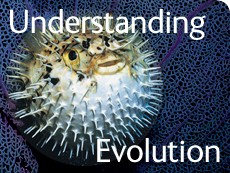Worst journey in the world
You need Adobe Flash Player, or an HTML5 enabled web browser, and JavaScript enabled to watch this video.
Visit the Adobe website to download the latest Adobe Flash Player
Join Douglas Russell, a curator in the Natural History Museum's Bird Group, as he tells the story of the remarkable journey undertaken by Apsley Cherry-Garrard, Henry Bowers and Edward Wilson during the Terra Nova expedition.
Find out why the men risked their lives to collect emperor penguin eggs in the middle of the Antarctic winter and discover the hardships they endured, later chronicled by Cherry-Garrard in his acclaimed book, The Worst Journey in the World.
Significance of the eggs
Excited by the discovery of emperor penguins during Robert Falcon Scott's 1901-04 Discovery expedition to the Antarctic, zoologist Edward A Wilson wanted to return to Cape Crozier during the birds' winter breeding season to collect their eggs.
Darwin's theory of evolution had been published in 1859, and the hypothesis was that the embryos in the eggs might shed light on the evolutionary link between reptiles and birds.
Wilson returned with Scott on his second expedition, Terra Nova. On 27 June 1911, just after mid-winter, he set out on his egg hunt with Henry Robertson 'Birdie' Bowers and Apsley George Benet Cherry-Garrard.
The plan
From the hut at Cape Evans, Wilson, Bowers and Cherry-Garrard headed for the penguin colony at Cape Crozier, pulling their sledges across the ice with their clothes frozen into 'armour-plate'.
Their plan was to set up camp near the colony and make several collecting trips over a period of days before returning home.
On 15 July the men camped at the foot of Mount Terror, about 6.5km from the colony. They built an igloo with stone walls and a canvas roof, and used their tent to store equipment.
Collecting the eggs
Reaching the penguin colony proved far more difficult than they expected, with ice-ridges making progress terribly slow. It took them 5 days to get to Cape Crozier, where they collected 5 eggs between them.
During the return journey 2 of the eggs broke, but once back in the igloo the embryos of the remaining 3 were removed and pickled in alcohol.
Blizzards strike
On the night of 22 July, the camp was hit by a blizzard, which blew away their equipment tent, and with it all hope of returning to fetch more eggs as planned.
The men rescued most of the equipment, but the blizzard continued and the next day tore the roof from their igloo. The three lay in their sleeping bags, becoming covered with snow as the storm increased to a hurricane. They knew that without the tent there was virtually no chance of a safe return, but kept their spirits up with songs and jokes.
They were without food for 2 days and 2 nights, sucking melted ice from their sleeping bags to stay alive.
The return
A lull in the storm gave the men the chance they needed to search for their lost tent, which they found by good luck 800m away. On 1 August, they staggered into Cape Evans, having survived longer exposure to the Antarctic wild than anyone before them.
The eggs
Wilson and Bowers were selected to accompany Scott on his expedition to the pole, and died with him on the return journey.
Cherry-Garrard brought the emperor penguin eggs to the British Museum of Natural History (which later became the Natural History Museum) in 1913. But the results of the embryo studies weren't published until 1934, by which time the hypothesis of penguins as an evolutionary link had been dismissed. The embryos for which so much had been risked contributed little of scientific importance.
The 3 eggs and the remains of the embryos nevertheless have immense historic importance as the goal of the incredible journey and the struggle for survival in the appalling conditions of the Antarctic winter. They are now being cared for as part of the Museum's zoological collection.

